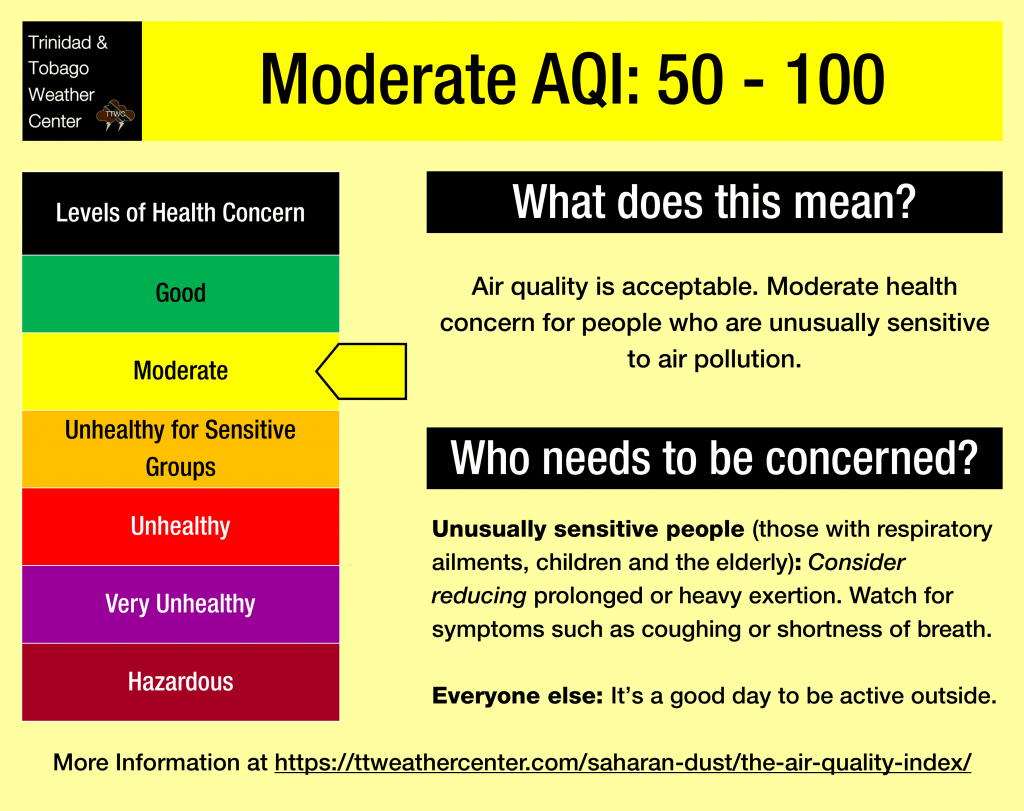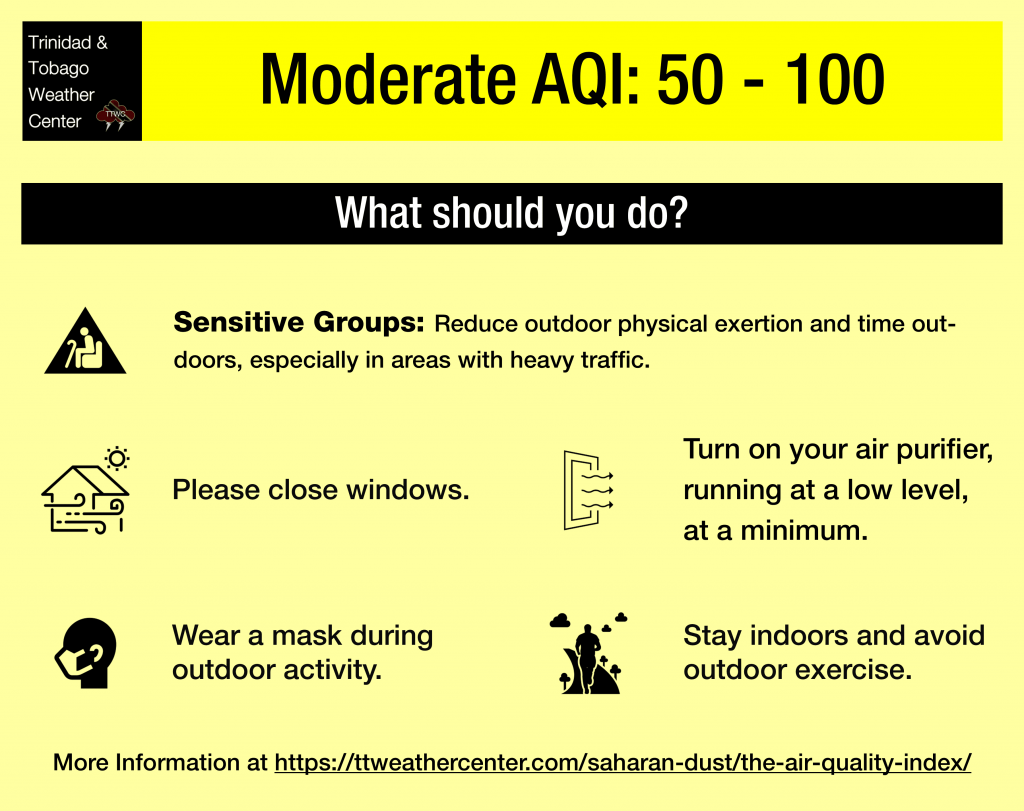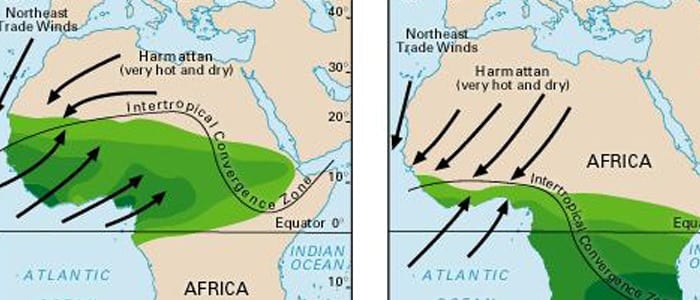A brief surge of Saharan Dust is set to return to Trinidad and Tobago Monday through Tuesday. Based on current forecast models, this dust surge is set to be short-lived, with improvement from Wednesday.
What you need to know
— Saharan Dust Surges: A brief and mild to moderate surge of dust is forecast to move across T&T starting Monday and subsiding by Tuesday. From Wednesday, little to no Saharan Dust is forecast across the region through the end of January.
— Impacts: Air quality is forecast to remain good to moderate throughout the forecast period.
— What Should You Do: Sensitive groups are advised to take the necessary precautions, particularly during high traffic.
Current AQI Levels Across T&T

As of 3:00 PM Sunday, January 19th, 2025, the official air quality monitoring stations from the Environmental Management Agency (EMA) at Point Lisas and Arima report good air quality, while the Signal Hill, Tobago, Toco, Beetham and San Fernando stations are not currently transmitting PM2.5 or PM10 data.
Unofficial air quality monitoring stations at Longdenville and Woodbrook report good air quality.
These measurements are based on PM2.5 (particulates the size of 2.5 micrometers and smaller, usually associated with increases in Saharan Dust, vehicle exhaust, and smoke) and PM10 particulates.
Outside of rainfall, visibility, used as a proxy for Saharan Dust concentrations, has remained at or above 10 kilometers at the A.N.R. Robinson International Airport at Crown Point, Tobago, and the Piarco International Airport, Trinidad, over the last 24 hours.
Saharan Dust Forecast For T&T

Higher dust levels will remain offshore east of the Lesser Antilles through the forecast period.
Sunday night (Jan. 19th): Little to no Saharan Dust forecast across Trinidad and Tobago. Air quality at good levels.
Monday (Jan. 20th) through Tuesday (Jan. 21st): Mild to moderate levels of Saharan Dust across both islands. Air quality is good to moderate levels.
Wednesday (Jan. 22nd) through Friday (Jan. 31st): Little to no Saharan Dust forecast across Trinidad and Tobago. Air quality at good levels.
What does this mean for you?
Mild to moderate concentrations of Saharan Dust on Monday and Tuesday are likely to bring air quality to moderate levels, chiefly affecting the most sensitive groups of the population. The general public is not required to take action.


The surges of dust during this time of year are due to the Harmattan, a season in the West African subcontinent that occurs between the end of November and the middle of March. During this season, a predominant northeasterly trade wind (dubbed the Harmattan Winds) blows from the Sahara Desert over Western Africa into the Gulf of Guinea.
During this period, a ridge of high pressure stays over the central Sahara Desert, and the Intertropical Convergence Zone (ITCZ) remains over the Gulf of Guinea. The Harmattan wind accelerates when it blows across the mountain massifs of Northwest Africa. If its speed is high enough and it blows over dust source regions, it lifts and disperses the dust.

Dust that makes it into the upper levels of the atmosphere can then get transported across the Atlantic Ocean and affect the Eastern Caribbean. These Saharan Dust outbreaks tend to be milder in the Eastern Caribbean than the dust outbreaks.











